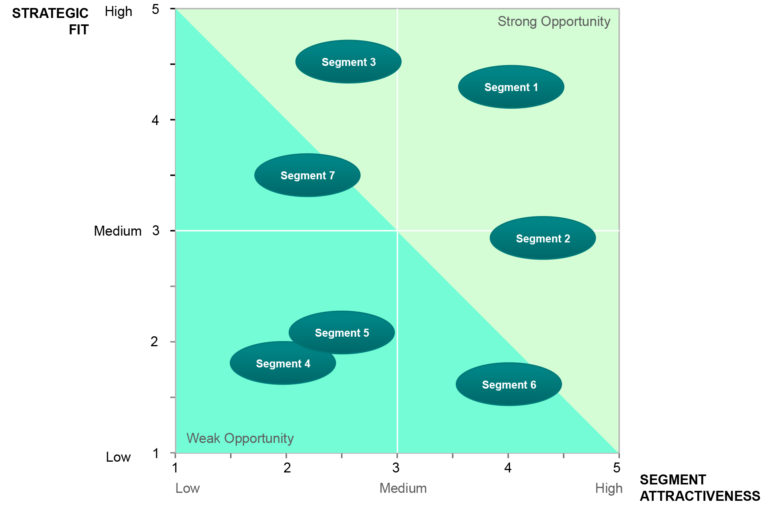Opportunistic acquisitions don’t always create value – strategic acquisitions do. Winning companies don’t jump to candidate targets right away. They form a deep understanding of the industry, its players, and the strategic fit with their company. Then, they make an informed move. The process involves analyzing the industry, examining segments of opportunity, and forming a preliminary list of target candidates.
Comprehensive Industry Analysis
The objective is to gauge the attractiveness of the industry. The primary concern is to understand the industry environment because it has a direct impact on the level of competition. The second concern is to identify the position on the value chain where to focus because it affects the profitability potential. Finally, it is essential to know the industry dynamics and the trends to recognize the underpinnings of competitive behavior to be able to predict future moves.
As a result, we need to answer three sets of questions to determine the attractiveness of the industry:
- Industry Structure and Sizing: what is the geographical scope of the industry (global, national, local), what is the industry value chain of activities, what are its size and growth?
- Industry Profitability Drivers: what is the stage of the life cycle on the industry, and what are the underpinnings of competition and the drivers of profitability?
- Industry Trends and Dynamics: what are the forces and trends that shape competition?
Examination of Opportunity Segments
The objective is to identify segments of the industry that represent the opportunity to create value. This examination involves two steps: (1) prioritizing segments for their inherent attractiveness, and (2) matching them to the strategic fit of the firm.
What makes a segment inherently attractive are its growth, profit margin, and the level of competitive fragmentation. In prioritizing segments, we need to answer the following question:
- Segment Attractiveness: How attractive is each segment regarding growth, profit margins, and level of competitive fragmentation?
The strategic fit to the firm speaks to the suitability of the segment to the firm’s business model. Here, we need to be able to answer the following question:
- Strategic Fit: What is the level of similarity of the segment to the firm’s customers, competitors, and cost structure?
Together, Segment Attractiveness and Strategic Fit serve to identify attractive segments of opportunity where the firm can create value. Exhibit 1 illustrates this concept.
Exhibit 1. Map of Attractive Segments of Opportunity

Preliminary List of Acquisition Targets
You can now start searching for acquisition targets within the attractive segments of opportunity. Putting together an initial list is no easy task. Furthermore, it is essential to make sure to conduct a comprehensive search at this stage so as not to overlook valid candidates. Screening targets is a later process.
Two approaches are particularly useful in ensuring a comprehensive search. First, list the companies that you already know that fit these segments. Consider bringing in the management team and functional experts for additional data points.
Second, extend the list by making an exhaustive search based on industry databases. These may include the six-digit North American Industry Classification System (NAICS code), the United Kingdom Standard Industrial Classification of Economic Activities (UKSIC), the European Union industrial classification system (NACE), or the United Nations International Standard Industrial Classification of All Economic Activities (ISIC).
Benefits
If you are looking to make an acquisition, a systematic approach to understanding the industry and where to play is invaluable. A robust top-down analytical discovery of the industry focuses the search for target candidates on attractive segments of opportunity where the firm has a strategic fit.
This framework ensures a comprehensive approach, laser-like focus, and timeliness. Findings empower management to move ahead quickly and confidently without having to circle back to revisit unproven assumptions about the market or fill in incomplete overlooked last-minute information.
Also, a strategic approach to M&A generates considerable proprietary insights into the market and strategic thinking about the core of the company, with the dual advantages of being ahead of the competition, and avoiding costly mistakes down the road.

